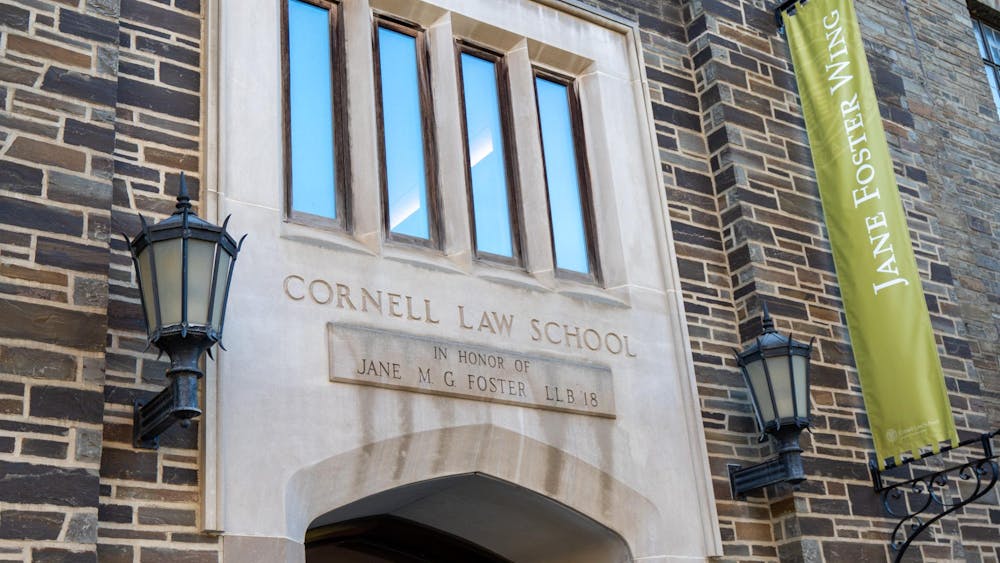The county opened a temporary Code Blue shelter this winter that closed on Tuesday. Now, the DSS will provide Code Blue sheltering through Temporary Housing Assistance services. In the wake of the prior year-round shelter, Tompkins County is developing a long-term facility aiming to serve about 100 adults experiencing homelessness and to provide direct, on-site services.
Tompkins County announced a long-term plan in November to repurpose a property at 227 Cherry St. in Ithaca as a long-term homeless shelter facility, intended to open in 2026.
Tompkins County Legislator Mike Sigler (6th District) has served for over a decade and is currently representing Lansing. The former antique store on site will be torn down to make room for a new structure with several different floors, according to Sigler said.
The plan aims to bring services “directly to the population,” Sigler said. “If you walk in, we're going to give you a warm place to sleep, clean up a little bit and then hopefully get you into some services, get you into the system, so that we can put you on a path that will lead you out of homelessness permanently.”
Until November, the St. John’s Community Services shelter operated as the only year-round emergency homeless shelter in Ithaca. Tompkins County utilized SJCS services for Code Blue sheltering during the winter, Sigler said.
Code Blue sheltering is a service mandated by New York state during temperatures lower than 32 degrees Fahrenheit with wind chill. When SJCS could no longer provide these services due to “staff capacity issues,” the county “needed to move very quickly,” Sigler said.
On Sep. 24, the county published plans to repurpose the former Key Bank Building in downtown Ithaca to serve as a temporary Code Blue shelter while long-term plans are finalized.
The temporary Code Blue shelter, set to open on Nov. 1, faced nearly a month of delays and opened to the public on Nov. 25. The shelter wasis operational from November through April, providing daytime warming services and emergency overnight shelter for over 50 individuals at a time, complete with staff and security services.
Tompkins County Department of Social Services Commissioner Kit Kephart wrote in an email to The Sun that the temporary shelter was set up by a county-wide planning team, the Office of Temporary and Disability Assistance, Social Services staff and community partners.
Since its opening, 153 people have utilized the shelter throughout the Code Blue season, and expressed gratitude for a “safe, warm place to be,” Kephart wrote.
Josh Camavaf, a temporary resident at the shelter, described his stay as “a little bit uncomfortable” but noted that he experienced good treatment by the staff.
Sigler described the many “moving parts” involved in addressing the crisis of homelessness in Tompkins County. Between 2022 and 2024, homelessness in Tompkins County increased by 38 percent.
The COVID-19 pandemic “has broken a lot of systems, and if it didn't break this system, it definitely exposed cracks in [it],” he added.
Sigler also acknowledged the ongoing challenge of funding for supportive housing programs.
“Funding will always be a challenge,” Sigler said. “What you need to do is go to the general public — the taxpayers — who already feel overburdened in New York State. To have someone come and say, ‘Listen, we need your tax money to go to this,’ and it’s not something they’re really feeling in their daily lives — that’s a hard sell. But it’s a sell we have to make.”
The county is contributing $1.5 billion to developing a mental health stabilization unit in collaboration with Cayuga Health Systems, Sigler said. The intensive program is set to launch in late 2025 or early 2026, while other withdrawal and stabilization services will begin as soon as they are approved by the county legislature and New York State.
Sigler further emphasized the need for a transitional step in the process of moving people out of homelessness.
“[After] we take somebody into the shelter, where do we take that person?” he said. “It's that middle [step] that we're missing. And we've been missing that for a long time.”
Second Wind Cottages is a non-profit organization that offers this type of interim step for those transitioning out of homelessness.
“It's hard to move somebody from homelessness right into an apartment without any oversight,” he said. “We have extreme problems when we try to do that, both at Asteri and [Arthaus Apartments].”
The Asteri Apartments which opened in Aug. 2024, in the Ithaca Commons have been the site of a large increase in violence. Sigler described a visit to the building, noting visible maintenance issues, water covering the floor and news of a stabbing two hours after his visit.
“That's the kind of trouble we see when we try to move people from homelessness into a building so quickly without any kind of supportive services,” he said.
Only 40 out of 281 units in the apartments are supportive units, meaning that residents are provided services such as family support, rental assistance, food pantry access and recovery programs.
“These are our brothers, our sisters, our mothers, our fathers that are out on the street, and it would be very difficult for them to get off the street and into an apartment without someone lending them a hand,” Sigler said. “That's what it is to be a part of society –- to help people and to get them on a path that's sustainable. It’s not just to get them through the day, but to get them through the next year.”

After Loss of SJCS Shelter, Tompkins County Shifts Toward Long-Term Homelessness Strategy
Reading time: about 6 minutes
Read More









